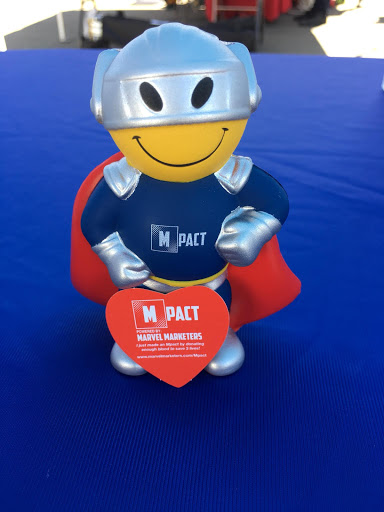Who are you talking to and what are you trying to say?
You need a specific answer to each of these questions in order to create content that makes your overall marketing strategy a success.
Content comes in many different forms—emails, social media posts, product pages, blog posts, the list goes on and on—but the messaging you use in all of them should be the same. It’s the messaging that turns content publishing into a full-fledged content marketing strategy.
What Is Messaging?
In marketing, messaging is defined as “an approved set of key points or messages an organization uses to communicate about something with a target audience.”
Ideally, you should have brand-wide messaging for each of your product or service offerings AND for each persona that you target. After all, the conversion you have with a C-Suite executive is going to have a very different focus than the conversation you have with a stay-at-home dad.
4 Questions to Answer
Create your organization’s messaging strategy, by answering these 4 questions:
- Who is my target customer?
- What’s most important to my target customer?
- What sets me apart from the competition?
- What needs, goals, and challenges does my target customer have?
It’s important to note that the answers to these questions can change, depending on fluctuations in your industry or even the world as a whole. For example, after COVID-19 led to massive budget cuts, your target customer might currently value price over anything else. But six months from now, your target customer may have a different priority.
As a general rule, you should review your messaging every six months to make sure it’s still accurate. And if there’s a major fluctuation, you should review your messaging as soon as possible.
A Real-World Test
To better understand how those questions and their answers help create your messaging strategy let’s walk through an example. Let’s say you have a data analytics platform that’s used by both enterprise and mid-size businesses. Here’s what your messaging answers might look like:
1. Who is your target customer?
You’ve got two—enterprise businesses and mid-size businesses.
2. What’s most important to your target customer?
For the enterprise, being able to run queries on massive amounts of data as quickly as possible is the biggest priority. The longer it takes to analyze data, the longer it takes leadership to make decisions—which puts the company at risk of having to play catch-up to its competitors. While the enterprise wants the price to be competitive, leadership is willing to make a sizeable investment into the right tool.
For the mid-size business, fast results are great, but an affordable price is even greater. In fact, a flexible price that can go up and down as the business fluctuates is the very best asset. That way, the budget can handle both ups and downs.
3. What sets you apart from the competition?
Let’s say your platform comes with real-time analytics, a fast setup, and a scaled pricing model. You know you have two very different target customers, so you’ve worked hard to come up with solutions that work for everyone, in every situation.
4. What needs, goals, and challenges does your target customer have?
The average enterprise is generating so much data but doesn’t know how to handle it all. Leadership knows it should be making fast, data-driven decisions, but making them is impossible when you’re only analyzing a tiny fraction of the available data. At the same time, the competition is working feverishly to take charge of its data, so leadership knows it needs a solution—and needs it now.
The mid-size business is trying to scale, but it doesn’t have the massive budget that bigger companies do. That means its leadership needs to find quality solutions that are also affordable. The sooner they do, the sooner they’ll be able to make educated decisions that will enable them to scale. The mid-size business also doesn’t have a ton of resources to dedicate to any one task, so having a data analytics platform that’s easy to set up and manage is also vital.
Time to Create Content
With all of the answers to these questions, it’s easy to see what kind of conversation you’re going to have with each persona. It’s easy to figure out which information is most important to share, which features are most important to highlight, and which goals are most important to address. You can just as easily use these answers to write an email nurture campaign as you can a social media campaign. In the end, you’ll have cohesion in every piece you create, which leads to a stronger brand overall and ensures your content is effective.




